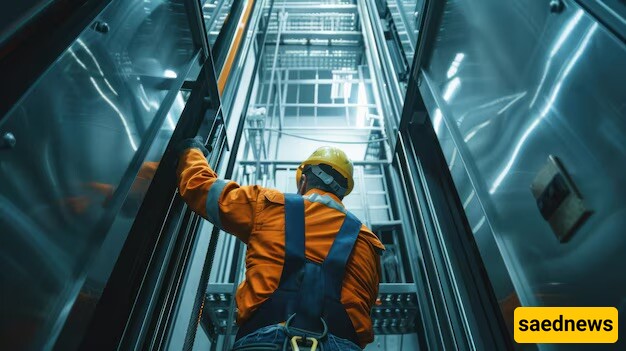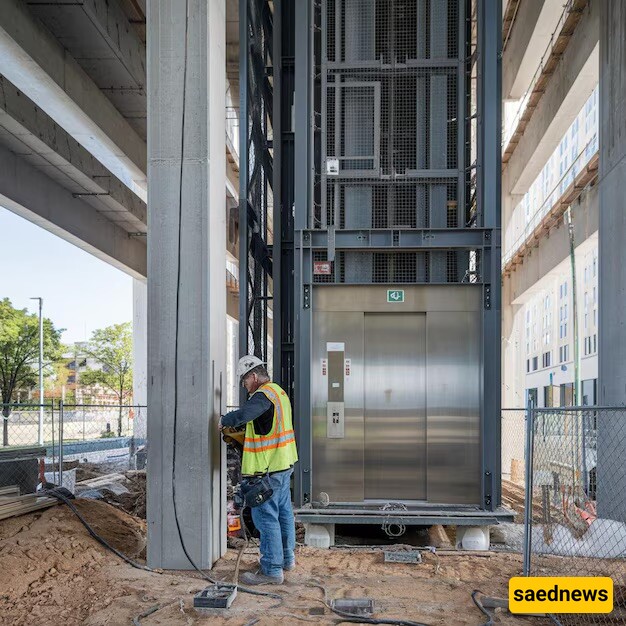The process of installing an industrial elevator requires careful planning, expert installation, and comprehensive testing. These elevators are designed with considerations such as capacity, speed, height, control systems, and safety features, ensuring full compliance with workplace safety standards.

Industrial elevators are essential for many businesses and industries, enabling the safe and efficient transportation of goods and personnel to elevated heights. They are customizable for various applications, including warehouses, factories, distribution centers, and multi-story buildings. Installing an industrial elevator is a complex task that demands high-level expertise.
Ensuring that industrial elevators are built and installed to the highest safety standards is crucial for reliable operation. Regular maintenance is also necessary to prevent potential issues that could lead to downtime. By following preventive measures, industrial elevators can be a worthwhile investment, improving productivity, reducing operational disruptions, and enhancing workplace safety.
Industrial elevators come in various types, each with unique features and applications. The most common types include:
Freight Elevators: Designed to transport heavy and bulky loads with high capacity.
Passenger Elevators: Used for transporting personnel in industrial settings, typically with lower capacity than freight elevators.
Hydraulic Elevators: Operate using hydraulic power, featuring a simple structure.
Traction Elevators: Utilize traction force for movement, offering higher speed and capacity.
When installing an industrial elevator, several factors must be considered:
Capacity & Dimensions: The elevator’s capacity should be planned according to specific needs, and its dimensions must allow for safe and efficient loading and unloading.
Elevator Height: The required height should accommodate the movement of goods between floors.
Speed: The elevator's speed must balance productivity with safety.
Control System: The control system should ensure safe and efficient operation, including safety features such as emergency stops and overload detection.
Safety Equipment: Essential safety features include landing gates and door locks to ensure safe usage.
Installation Environment: The operational conditions of the elevator should be considered to ensure proper functionality.
For additional insights on industrial elevators, consulting leading companies such as Atis Elevatorcan provide valuable guidance.

The installation of an industrial elevator involves extensive planning, safety measures, and thorough testing. After installing the elevator equipment, engineering and commissioning teams work closely to ensure safe and efficient operation. The installation process typically includes:
Precise calibration of components
Full and partial load testing
Control system adjustments
Software updates
Once installation is complete, the elevator undergoes rigorous testing to verify compliance with all safety standards and ensure optimal performance.
Ignoring safety measures during installation can lead to severe injuries or fatalities. Before commissioning an industrial elevator, the following must be ensured:
The elevator must be installed and inspected by a qualified professional.
It should have a valid certification.
Operators should receive proper training.
A regular maintenance plan should be followed.
Manufacturer instructions must be strictly adhered to.
Workers should avoid standing beneath the elevator while in operation.
Any malfunctions should be reported to a qualified technician immediately.
The cost of an industrial elevator depends on various factors, including:
Type of elevator (hydraulic elevators are generally cheaper than traction elevators due to fewer structural requirements).
Capacity and height (higher capacity and taller elevators increase installation costs).
Special features (such as automatic doors, communication systems, and customized finishes can add to the overall cost).
Beyond installation expenses, businesses should also factor in ongoing maintenance and repair costs.
Regular maintenance is crucial for ensuring safety and optimal operation. Maintenance tasks include:
Routine inspections by licensed technicians to ensure compliance with safety standards.
Preventive repairs, such as cleaning, lubrication, and replacing worn-out components.
Safety tests to assess brakes, safety mechanisms, and overall functionality.
A strict maintenance schedule helps extend the elevator's lifespan, minimize safety risks, and prevent costly breakdowns.
Installing industrial elevators offers several advantages for businesses, including:
Increased Productivity: Workers can move quickly between facility levels, enhancing efficiency and output.
Enhanced Safety: Elevators reduce the risks associated with manually lifting or transporting heavy materials.
Improved Accessibility: Industrial elevators enable better access to remote or high-altitude areas, saving time and effort.
Installing an industrial elevator requires strict adherence to regulations, including:
Safety requirements
Electrical codes
Building standards
Additionally, installation must be carried out by qualified professionals following the manufacturer's specifications. After installation, thorough testing and inspection are necessary to verify proper functionality and compliance with all safety standards.
Failure to follow regulations can lead to serious accidents, legal liabilities, and operational disruptions.
Setting up an industrial elevator requires coordination between multiple stakeholders, including engineers, suppliers, and maintenance personnel. Proper information sharing is crucial for:
Efficient planning and execution
Ensuring equipment compatibility
Providing training for operators
A centralized communication platform—such as an online portal or document management system—can help streamline information sharing and maintain consistency across different teams.
When purchasing an industrial elevator—or any type of elevator, such as hospital or traction models—businesses must first assess their specific needs, including:
Intended application
Height requirements
Load capacity
After determining these factors, businesses can consult reputable manufacturers such as Otis, Schindler, Atis Elevator, and others to explore their options and make an informed purchase.

